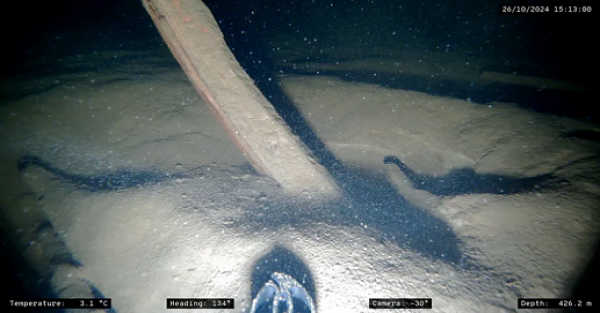Dense spheres rained down on Oakville in the summer of 1994, leaving scientists with no conclusive analysis.

Mud rain fell on Oakville six times in 1994. Photo: Wikimedia
On August 7, 1994, the first occurrence of mucus rain occurred in Oakville, according to IFL Science . It fell from the sky as small droplets of mucus, smaller than a grain of rice, but with heavy rainfall, it became visible on the ground and rooftops, including the home of local resident Sunny Barclift. On August 19 of the same year, The Lewiston Tribune reported that mucus rain continued to fall for the second time in a fortnight.
A hospital examined the mucus under a microscope and concluded that it contained human white blood cells, sparking speculation that it was waste from an airplane toilet, but a spokesman for the US Federal Aviation Administration denied this hypothesis because toilet waste is often dyed blue, hence the nickname "blue ice".
The second, more interesting theory explains the slime as exploding jellyfish. The 354th Fighter Squadron dropped several bombs in the Pacific Ocean off the coast of Washington at the time. The bombs landed on a swarm of jellyfish, which may have been the source of the Oakville slime rain.
Paul Johnson, professor emeritus of biology at the University of North Georgia, said it’s possible that jellyfish debris was shot into the atmosphere and collected during the storm. Raining animals isn’t new, but with a total of six instances of slime falling on the city, it’s hard to imagine jellyfish debris floating in the air for so long.
On August 20, 1994, the Washington State Department of Ecology conducted an analysis of the mucus. Their scientist Mike Osweiler examined the Oakville mucus granules and found several cells of varying sizes. This result seemed to disprove the previous hypothesis of platelets, since the cells did not have nuclei. As multicellular organisms belonging to the phylum Stingray, jellyfish are composed of eukaryotic cells like many other animals, including a nucleus and membrane-bound organelles.
The life form without a nucleus would constitute a prokaryotic cell, commonly found in bacteria and archaea. Microbiologist Mike McDowell of the Washington State Department of Public Health (WSPHD) said he and his colleagues could not see any structures through microscopic observation. They placed the mucus in a variety of microbiological substrates and tried to isolate the bacteria. The WSPHD report noted the presence of two bacteria, Pseudomonas fluorescens and Enterobacter cloacae, both of which live in the digestive tract of humans and other mammals. They are also found in the environment at garbage dumps and can travel in water and aerosols.
Several Oakville residents fell ill with flu-like symptoms after coming into contact with the mucus, including Barclift’s mother. However, researchers don’t know if it was a direct result of the mucus rain. Barclift and a friend also experienced vomiting and fatigue after collecting and touching the mysterious mucus. At the time, she thought the symptoms could have been a coincidence. However, Barclift believes the Oakville mucus rain is an unusual occurrence.
An Khang (According to IFL Science )
Source link




![[Photo] Closing of the 11th Conference of the 13th Central Committee of the Communist Party of Vietnam](https://vstatic.vietnam.vn/vietnam/resource/IMAGE/2025/4/12/114b57fe6e9b4814a5ddfacf6dfe5b7f)

![[Photo] Overcoming all difficulties, speeding up construction progress of Hoa Binh Hydropower Plant Expansion Project](https://vstatic.vietnam.vn/vietnam/resource/IMAGE/2025/4/12/bff04b551e98484c84d74c8faa3526e0)

























































































Comment (0)